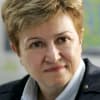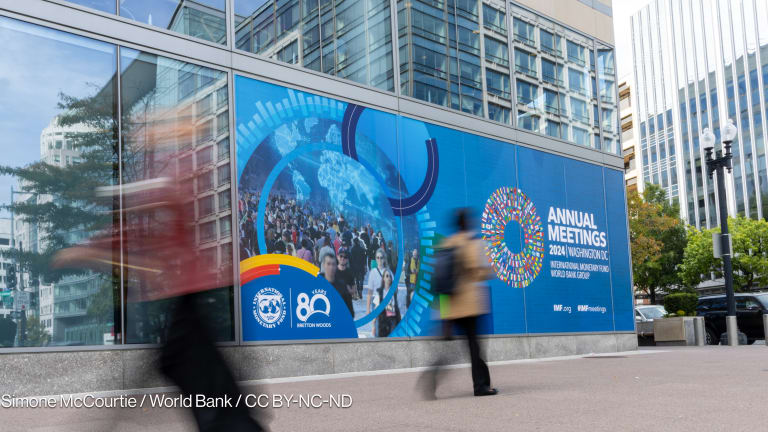
At the recent World Economic Forum in Davos, the issue of global inequality was a regular feature. How, delegates asked, can we address the yawning gaps in wealth and opportunity between the top 1 percent of the world’s population and those at the bottom of the pile?
It’s not an easy question. There are no silver bullets. But part of the answer is improving equality of opportunity, which is why the World Bank is increasingly focused on making investments in human capital through nutrition, quality health care, education, jobs, and skills. Without these investments, people are denied the opportunity to fulfill their potential and everybody misses out.
“Irrespective of when, why and how you acquire a disability everyone has the right to be included.”
—Several years ago, I met a young Somali refugee named Mohammed. He was just 18 years old and had lost the use of his legs. When I met him, he was using a wheelchair. We talked a lot about school — he told me that before he had his wheelchair, he would crawl every day to school and back because it was so important to him to learn. He told me that the money for that wheelchair had transformed his opportunity to learn — he would have gone to school anyway, but this small investment made a big difference. The last I heard from him, he had graduated and started a small business.
When we talk about equality of opportunity, it cannot be just about casting a wide net. We have to take actions that foster inclusive policies and deliver services that are accessible to persons with disabilities. Like in Mohammed's case, the action was relatively small but ultimately transformative. Today, he is a productive citizen.
People with disabilities are often among the most vulnerable in society, and typically face tougher barriers to education, health, transport, and other services. It is often harder for people with disabilities to improve their livelihoods and or take advantage of economic opportunities due to the exclusion they experience.
Devex’s Development Enabled series
Development Enabled explores the daily challenges of people with disabilities, while looking at solutions on how to support a disability-inclusive world.
The World Bank has been active in supporting disability inclusion, and we have significantly ramped up our efforts in the past five years, including with support to disabled ex-combatants in Rwanda and small women-owned businesses in Gaza. In both projects, the bank provided vocational and employment opportunities for persons with disabilities — disabled ex-combatants in Rwanda and in Gaza to young women with disabilities — and as a result, to their dependents. And our new Environmental and Social Framework commits that none of our projects will discriminate against persons with disabilities.
But reducing discrimination is just a first step. The fact that 800 million people in developing countries have a disability means we should do more. We must actively make disability inclusion the norm rather than the exception.
That is why the World Bank has made 10 time-bound commitments in three areas that will make our work more inclusive of people with disabilities.
First, we are committing to disability inclusive projects. By 2025, all of our education projects and programs will be disability-inclusive. Three-quarters of our jobs and social protection projects will be as well. By 2020, all our new urban mobility and rail projects that support public transport services will be disability-inclusive. Finally, any public spaces that we work to rebuild after a disaster will be disability-inclusive by 2020.
We also launched a Disability Inclusion and Accountability Framework that helps educate our staff on how to do a better job of including people with disabilities in our projects and analytical work. And we have published a good practice note on the nondiscrimination and disability to guide our operations.
Second, we are committing to collecting better disability data — we have signed the Inclusive Data Charter — and the World Bank will continue to use the Washington Group questions. These are designed to identify populations that are at a greater risk of experiencing restrictions in social participation — for example in employment, education or civic life — and to provide comparable cross-national data for a variety of cultures and contexts. Going forward, we will collect better data on disability in all its forms through the household surveys and censuses we support. And we are doing more to highlight the issue of women with disabilities through new questions in our forthcoming women, business, and the law survey.
Third, we are committing to an inclusive World Bank Group. To ensure equality of opportunity, we have a Disability Accommodation Fund that supports the needs of prospective bank employees, current staff, and visitors. This funds anything from essential software to translation to in-person support and it helps make our workplace and our workforce much more inclusive. We are also doing more to actively seek to hire and retain staff with disabilities, and to go even further to make sure that our work, workplace, and services are accessible to all.
Work is well underway to implement these commitments. In Nigeria, for example, our country team is putting the ten commitments into practice already. The country director has introduced a “disability filter” for all projects and has made this an integral part of the job for one of our colleagues in the Abuja office.
From CSR into HR: Disability inclusion in the workplace
What are the benefits of a disability-inclusive workforce and how can more employers, regardless of location, be encouraged to employ people living with a disability?
We established a multi-donor trust fund on inclusive education, an initiative that was announced by U.K. Secretary of State for International Development Penny Mordaunt, at the Global Disability Summit last year, and supported by the U.K. Department for International Development and the Norwegian Agency for Development Cooperation, This will complement a U.S. Agency for International Development Africa-focused trust fund on inclusive education.
I am determined to keep the World Bank focused on these efforts. But the agenda is bigger than one institution. It is the collective responsibility of the wider development community, the countries we work with, and the communities we are trying to reach.
Organizations can look to improve their practice by, for example, building the knowledge and capacity of teams and staff to take action on disability inclusion, and allocate appropriate resources to this. It is also important to identify potential champions within an organization to help achieve some quick wins and then push the frontier forward. And in the longer term, to build the knowledge and evidence base on what works for disability inclusion. Ultimately, however, as development institutions, we can only be effective if we reflect the world around us and the aspirations of all the people we serve.
Disability is part of our human diversity and can be a reality for any one of us at any time. Irrespective of when, why and how you acquire a disability everyone has the right to be included.
For more coverage on creating a disability-inclusive world, visit the Development Enabled series here.









